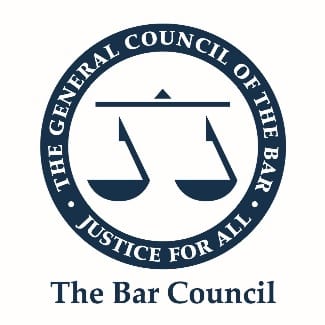The Treatment of Soft Loans in Financial Remedy Proceedings
Introduction
On 10 February 2022, while delivering judgment in the case of P v Q [2022] EWFC B9, between P, 'the wife', and Q, 'the husband' HHJ Edward Hess gave guidance on the treatment of soft loans in financial remedy proceedings. This guidance is relevant to everyday practice as this topic frequently features in out of court negotiations and during litigation. In this article, I set out this guidance as well as explain its wider significance in the current economic climate.
Factual summary
The extent to which assets affected by transactions between each party and members of their own family should be treated on the asset schedule was described as having 'created a good deal of argument and ill feeling between the parties'.
The husband's mother, R had sold her business for £2m in 2007. In 2010, she advanced £150,000 to each of her three children to assist them with their respective housing costs. No documentation was drawn up contemporaneously or later to record the terms of the advance. There was no evidence of any tax planning advice having been given at any time. No demand was made for repayment of these sums. Nor was there ever any discussion about the circumstances in which repayment would or might be expected other than if it was needed by R to assist with her care.
In June 2020, the husband paid to his mother the sum of £150,000, asserting it to be the repayment of the loan. The wife objected to the removal of £150,000 from the asset schedule so that it did not have to be divided 50:50 with the wife on sharing principles.
In October 2004, before the parties had met, the wife received €30,000 from her father, S. A contemporaneous document was produced in evidence, which recorded the arrangement. It was an 'interest free loan' for which 'a date for repayment has not been set' and the arrangement included the term that 'as long as the father does not demand any extraordinary urgent repayment, the daughter will repay the loan back at her own discretion'. The wife made no repayment and no demand was ever made by her father. The wife said in oral evidence that she didn't expect her father to pursue the debt, but felt that he could and that she had raised this issue in view of the points taken by the husband in relation to his transaction with his mother.
Treatment of soft loans – legal guidance
At paragraphs 19(vii) to (x) of his judgment, HHJ Hess set out guidance on how to treat soft loans.
He commented that the advance of money to the husband and the wife by their respective parents were quite similar in their circumstances and raised questions of law, which are not uncommon in financial remedies cases.
As a matter of general principle, for an advance of money to be a gift there must be evidence of an intention to give – the animus donandi. In the Family Court, however, the inclusion or exclusion of a technically enforceable debt in an asset schedule can depend on its softness/hardness.
In deriving a summary of principles, the following authorities were considered: M v B [1998] 1 FLR 53; W v W [2012] EWHC 2469; Hamilton v Hamilton [2013] EWCA Civ 13; B v B [2012] 2 FLR 22; Baines v Hedger [2008] EWHC 1587; and NR v AB [2016] EWHC 277. The Judge also looked at an article by Alexander Chandler (coincidentally the pFDR 'judge' in this case): 'Family Loans and intervener claims – taking the bank of mum and dad to court' [2015] Fam Law 1505.
Summary of principles
(a) Once a judge has decided that a contractually binding obligation by a party to the marriage towards a third party exists, the court may consider whether the obligation is in the category of a hard obligation or loan, in which case it should appear on the judges' computation table. Or it is in the category of a soft obligation or loan, in which case the judge may decide as an exercise of discretion to leave it out of the computation table.
(b) There is no hard or fast test as to when an obligation or loan will fall into one category or another, and the cases reveal a wide variety of circumstances, which cause a particular obligation or loan to fall on one side or other of the line.
(c) A common feature of these cases is that the analysis targets whether it is likely in reality that the obligation will be enforced.
(d) Features which have fallen for relevant consideration (but are not intended to be an exhaustive list)
(e) For hard obligations:
- the fact that it is an obligation to a finance company;
- that the terms of the obligation have the feel of a normal commercial arrangement;
- that the obligation arises out of a written agreement;
- that there is a written demand for payment, a threat of litigation or actual litigation or actual or consequent intervention in the financial remedies proceedings;
- that there has not been a delay in enforcing the obligation; and
- that the amount of money is such that it would be less likely for a creditor to be likely to waive the obligation either wholly or partly.
(f) For soft obligations:
- an obligation to a friend or family member with whom the debtor remains on good terms and who is unlikely to want the debtor to suffer hardship;
- the obligation arose informally and the terms of the obligation does not have the feel of a normal commercial arrangement;
- there has been no written demand for payment despite the due date having passed;
- there has been a delay in enforcing the obligation; or
- the amount of money is such that it would be more likely for the creditor to be likely to waive the obligation either wholly or partly, albeit that the amount of money involved is not necessarily decisive, and there are examples of large amounts of money being treated as being soft obligations.
(g) It is for the judge to determine looking at all of these factors, what is the appropriate determination in the promotion of a fair outcome.
Findings of soft loans in P v Q
On the face of it, both transactions were loans, which could, in theory, be enforced. However, they were both very much at the soft end of the scale and discretion was exercised to exclude them from the schedule. HHJ Hess decided that the husband's primary motivation in making the payment of £150,000 to his mother in June 2020 was because he was concerned that the wife would share half of it if he did not do this. Repayment did not elevate the loan into hard loan status. In deciding that both of these debts were very soft, to do fairness between the parties, the wife's debt to her father was not included in the asset schedule and the £150,000 was re-credited to the husband's side of the schedule.
Comment – wider implications
1. The Bank of Mum and Dad
With stagnant wages and high property prices, the so-called 'Bank of Mum and Dad' has become a major player in UK property transactions. Research several years ago by Legal & General and the Centre for Economics and Business Research showed that lending by family and friends would be the driving force behind the recovery of Britain's housing market as buyers struggle with the economic impact of the COVID-19 crisis. Nearly one in four housing transactions (23%) were forecast to be backed by the 'Bank of Mum and Dad' in 2020, with 24% of borrowers now more reliant on financial support from family and friends. 65% of people who bought with help from 'Bank of Mum and Dad lenders' said it would have been unlikely without their support. It is not unreasonable therefore to suggest therefore that the P v Q guidance as to what constitutes hard and soft obligations will be helpful in at least one in four everyday financial remedy cases involving property ownership, a large number of which are negotiated outside of court, including in mediation.
2. Tax and asset protection
Tax and asset protection are relevant considerations when parents assist their children including buying a second property in the parents' names; purchasing it jointly with their child; giving the child the funds to purchase the property; lending the funds to purchase the property and using a trust to purchase the property. Selecting the right option often means balancing the competing interests of tax efficiency and asset protection. The guidance in P v Q suggests that the safest way to ensure that a loan from parents to a child is not treated as 'soft loan' is for a loan agreement to be executed as a commercial document on an 'arm's length basis' and with the parties independently advised on its terms.
3. Litigation funding
Keeping a track on what clients can afford on an ongoing basis is of course an important part of proportionality enshrined in the Overriding Objective at Part 1.1 of the FPR 2010. Most spouses cannot easily afford to litigate financial remedy cases from their income, particularly once the litigation reaches an advanced stage. In practice, many prefer to borrow from friends and family rather than incurring commercial rates of interest through bank loans or matrimonial finance loans. There is a risk that P v Q may be used as authority for the proposition that the lack of formality behind such lending arrangements means that they are at risk of being considered soft loans and discretion subsequently exercised to exclude them from the asset schedule. I do not believe that to be the case. The decision to include a soft loan on an asset schedule is now clearly articulated as discretionary. It ought however to be easier to persuade a court to include on the asset schedule a soft loan obtained to fund litigation. The alternative would be a reduction of overall resources after the interest on litigation funding loans are taken into account or the risk that without such soft loans a party might be unable to obtain representation. Obviously, every case is fact specific, but risk of asset schedule exclusion will be reduced if a formal arm's length loan is negotiated and recorded in writing with firm trigger dates for repayment and provision of interest in the event of default.
OGR Stock Denton acted for the 'Husband' Q in P v Q. The author acknowledges and expresses gratitude to Simon Sugar, Counsel for the 'Husband' Q in P v Q, for his kind assistance in preparing this article.





